Imagine you've borrowed a friend's car for a weekend trip, but you worry about potential accidents or damages. Non-owner insurance could be the solution you need. It provides liability coverage for those who frequently drive vehicles they don't own, protecting you in various situations. Understanding the specifics, costs, and benefits of this insurance can help you make informed choices, ensuring your financial safety while behind the wheel. What else should you consider before making a decision?
If you frequently borrow or rent cars but don't own one, non-owner insurance might be the coverage you need. This specialized car insurance provides liability coverage for drivers like you, who often find themselves behind the wheel of a vehicle that isn't theirs. It acts as secondary coverage in the event of an accident, kicking in when the primary vehicle owner's insurance isn't enough to cover the costs. This type of insurance is particularly useful for those who regularly rent cars, borrow from family or friends, or are in between vehicle purchases and want to avoid gaps in coverage.
Non-owner insurance primarily covers liability for bodily injury and property damage to others if you're at fault in an accident. While it typically includes options for uninsured and underinsured motorist coverage, these aren't always standard in every policy. Some policies might also offer medical payments or personal injury protection (PIP) to help cover your medical expenses if you're injured. If you're a frequent renter, rental car liability coverage can also be included. However, keep in mind that non-owner policies don't cover damage to the vehicle you're driving, so you'd need separate collision or extensive coverage for that.
One of the most significant benefits of non-owner insurance is the financial protection it offers. It helps you cover liability expenses resulting from accidents, which can otherwise lead to hefty out-of-pocket costs. By maintaining this coverage, you also prevent lapses in your insurance, helping you avoid spikes in premiums down the line. Plus, it provides peace of mind knowing you're protected when using borrowed or rented vehicles. If you ever needed proof of insurance, non-owner insurance can also serve as documentation for reinstating your driver's license after a suspension. Additionally, this coverage ensures you have additional liability coverage beyond the owner's limits and can help fulfill state-required SR-22 insurance mandates if needed.
You might find non-owner insurance particularly appealing if you regularly borrow cars from friends or family, rent vehicles during business trips, or are temporarily without a car. It's also beneficial for those with suspended licenses who need to maintain insurance while waiting for reinstatement. By keeping continuous coverage, you can avoid the complications that come with gaps in your insurance history, which could negatively impact your future rates.
Purchasing non-owner insurance is relatively straightforward. Most national insurance companies offer it, and major players like Allstate, GEICO, and State Farm provide these policies. You'll typically need just a credit or debit card and your driver's license number to get started.
The average annual premium for non-owner car insurance is around $325, which can be more cost-effective than buying rental car insurance every time you need a vehicle. However, costs can vary based on your state and driving history, so it's wise to shop around for the best rates.
Conclusion
In summary, while owning a vehicle often brings convenience and freedom, the reality of driving rented or borrowed cars can leave you exposed to significant financial risks. Non-owner insurance steps in to bridge this gap, providing essential liability coverage without the burden of full ownership. By choosing this economical alternative, you guarantee that you're protected during unexpected driving situations, allowing you to focus on the road ahead rather than the potential costs of accidents.


